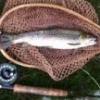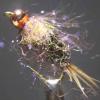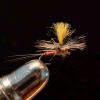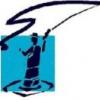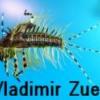Search the Community
Showing results for tags 'dry fly'.
Found 45 results
-
The CDC Dry Fly Midge is a perfect imitation for a midge hatch. These tiny flies are fairly easy to tie if you have good eyes, and do really well tandem behind a Griffith's gnat or larger dry fly. They are also really quick to tie, so you can make up dozens of them in an hour for your next trip. Don't be caught off guard by the next midge hatch! keep these in your box at all times! Hook: Daiichi 1110 size 26 (any 1x length dry fly hook will work) regularly tied from size 20-32. Thread: 8/0 thread in black, or any color you want to tie this in. Regularly tied in gray, brown, olive and cream. Hackle: The top feathers of a dry fly cape. These are very small hackle feathers, specifically for small midge flies. Wings: CDC Feathers. I used "natural dun" color, but common colors are white, brown, and gray. Music: Sunny, ukulele - Bensound.com
-
Midge hatches can be some of the most productive dry fly fishing experiences. The midges sometimes will cluster together, and the trout will go for these clusters because its a larger meal. The Griffiths Gnat matches the midge cluster very well. Its an old pattern that has been around for a long time, but still produces very well. It floats high on the water, so its great for an indicator fly when fishing a double rig. Use it as an indicator for a smaller midge dry fly, or even a midge emerger. Hook: Size 14-22 dry fly good (in this case an Umpqua U002 size 18) Thread: Black 8/0 or 70 denier thread Body: 2 peacock hurl strands Hackle: Grizzly dry fly hackle Music: Sunny, funnysong, ukulele - Bensound.com
-
I am just curious if anyone has any tips they to add extra floating properties to their Dry Flies beyond the gel or paste on the fly while at the stream? I know materials used are important as to whether the material floats or absorbs water but is there anything you might add during or immediately after tying a dry fly that gives it better floating properties and/or repels water more effectively?
-
I take a large number of trout on this pattern I tie. Tiemco 100 size 12 - 16 Furled antron tail into body/post 1 ginger hackle 1 cream hackle
-
I have tied a few trout flies and understand the differences between dry fly and wet/streamer fly hooks. However, since I don't live close to trout fishing I would like to tie for panfish and bass. My question to you tying guru's is this - Do I really need to worry about the hook classification (wet vs. dry) for panfish and bass? Also, I am thinking about tying for bluegill and crappie so I am thinking about using hook sizes 10 - 6. Is that appropriate? Can I just go to my walmart and pick up some aberdeen style hooks to tie, or do I need to stick with the wet/dry fly hooks at the more expensive retailers for better results. I would prefer to spend the extra money if it does yield better results because that is what matters most to me. I just didn't know if it really mattered all that much. I appreciate any help I get from yall. Thanks in advance!
-
Check out my new step-by-step of the Traditional Adams. http://www.fishbaitsflybox.com/2014/09/the-traditional-adams.html
- 9 replies
-
- Adams
- Adams Dry Fly
-
(and 1 more)
Tagged with:
-
This is the second tying video I've made. Figured out how to get everything in focus! Anyways, this is a quick and easy X-caddis that just uses some Pearl Krystal flash, Dubbing and deer hair! Enjoy!
-
-
- Roman Moser
- caddis pattern
-
(and 2 more)
Tagged with:
-
This is a little video a made showing how to make a march brown warren emerger pattern! what do you guys think.
-
This is a video of Mike Lawson talking about the history of the fly and tying the EZ Caddis. We just wanted to share it with some hardcore fly tiers. https://vimeo.com/60180188 Visit the link to view the video
- 2 replies
-
- Henrys Fork Anglers
- Henrys Fork
- (and 7 more)
-
Hot sommer fly on Gamakatsu R10-B size 14.
-
Fly tying dry fly "Jet Caddis"
-
Fly tying video "Crest Dun" http://youtu.be/16mum7Bfsh8
-
Fly tying dry fly "Zuev Palmer" http://youtu.be/pKUXgnDniOg
-
This is a video of Mike Lawson tying his EZ Caddis. This is an older video that we shot.
- 1 reply
-
- EZ Caddis
- Mike Lawson
-
(and 4 more)
Tagged with:
-
It's like a streamer that floats...Great indicator pattern for your dropper rig. Floats all day and will hold a heavy nymph. Picture is a little different than the video which is tied with Olive Ice Dubbing in the front. Thanks!
-
Check it out here is a new edition to the Deadly Dozen video collection. This is a video of Mike's Honey Ant pattern. The fly is tied by Joseph Bare a guide here at Henry's Fork Anglers. https://vimeo.com/60726272
-
- Dry Fly
- Ant Pattern
-
(and 3 more)
Tagged with:

